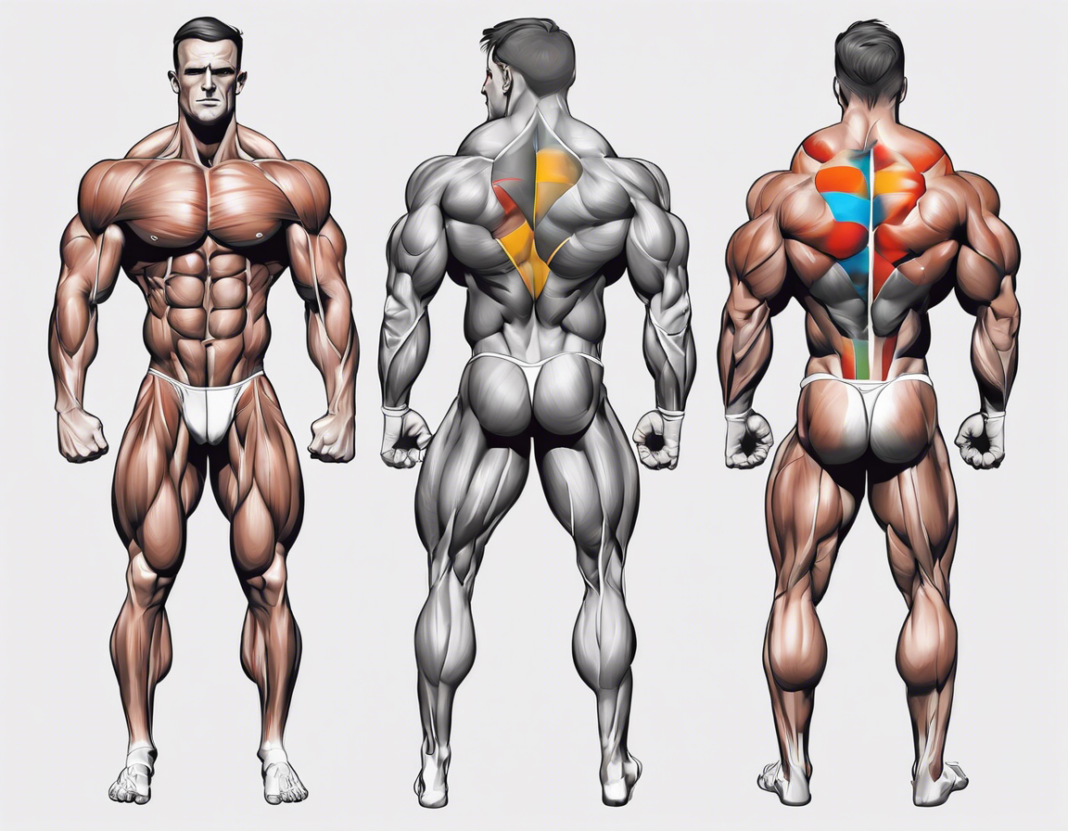The Bottom Line:
- The article ranks popular back exercises based on stretch, tension, and progression criteria.
- Renegade rows are criticized for combining exercises, leading to ineffective back activation.
- Deadlift, while beneficial for overall strength, is rated lower for lacking back-specific stretch and tension.
- Wide grip pull-ups and cable rows receive high rankings for providing good stretch, tension, and easy progression.
- Chest supported rows are crowned the best back exercise, offering effective lat and midback activation.
Renegade Rows – Ranking in F Tier
Renegade rows are not recommended for muscle growth due to several reasons. Firstly, they do not provide a sufficient stretch to the muscles as one’s movement is restricted when coming into contact with the floor. Secondly, the exercise does not offer maximum tension to the back muscles as other muscle groups need to engage and work hard for balance, reducing the effectiveness of targeting the back muscles. Overall, Renegade rows lack the ability to stimulate the back effectively and are therefore ranked in the F tier.
The Issue with Combination Exercises
The concept behind Renegade rows is to combine a plank and a dumbbell row in one movement. While planks are beneficial for core strength and rows are effective for back development, combining them dilutes the tension that the back muscles receive. This same principle applies to other two-in-one exercises such as dumbbell row plus curl or press, where the weaker muscle in the pair will always give out first, leaving the back under-stimulated and preventing optimal growth. As a result, Renegade rows and similar combination exercises are placed in the F tier.
Assessment of Deadlifts
Although the deadlift is praised for its benefits in total body strength, it falls short when assessed as a back-specific exercise. Deadlifts do not provide significant stretching to the lats or mid-back, and the tension experienced by these muscles is mainly isometric. Additionally, deadlifts may not yield a great back pump. While capable of being overloaded by adding weight or reps, the deadlift is placed in the C tier due to its limitations in directly targeting back hypertrophy.
Deadlift – Placed in C Tier
Assessment of Deadlifts for Back Growth
While the deadlift is widely acknowledged for its overall strength benefits, it falls short when evaluated specifically as a back-centric exercise. Deadlifts do not offer substantial stretching to the lats or mid-back, and the tension experienced by these muscles is primarily isometric. Additionally, deadlifts may not result in a significant back pump. Although they can be progressively overloaded with added weight or reps, the deadlift is categorized in the C tier due to its limitations in directly targeting back hypertrophy.
Deadlifts vs. Other Back Exercises
In comparison to exercises more focused on back hypertrophy, deadlifts do not perform as effectively. They lack the ability to provide a deep stretch or sustained tension to the back muscles necessary for muscle growth stimulation. While deadlifts excel in developing total body strength, their capacity to isolate and stimulate the back for hypertrophy purposes is limited, hence their ranking in the C tier.
Considerations for Deadlift Variations
When contemplating various deadlift variations such as sumo deadlifts or Romanian deadlifts, the focus shifts from pure back hypertrophy to overall lower body and posterior chain development. These variations may offer differing levels of back engagement and stretch but are not tailored specifically for maximal back muscle growth. Therefore, while deadlifts in their different forms can contribute to overall strength gains, they are not optimal selections for individuals primarily seeking back muscle hypertrophy.
Wide Grip Pull-Up – Awarded A Tier
Benefits of Wide Grip Pull-Ups
The wide grip pull-up is a top-tier back exercise for muscle growth, offering high tension throughout the range of motion and providing a deep stretch at the bottom. This exercise feels good and can help you achieve a nice back pump. However, one thing to be mindful of is the resistance profile of pull-ups, as they can feel easier at the bottom and harder at the top, impacting the smoothness of the movement.
Progression and Effectiveness
Despite the potential resistance profile challenge, the wide grip pull-up is an excellent exercise for progression. You can easily add one rep each workout or use a weight belt to increase resistance. Additionally, wide grip pull-ups not only offer physical benefits but also look impressive, showcasing your strength and dedication to pull-up training.
Variations and Additional Insights
For those looking for a variation with slightly more lat emphasis, neutral grip pull-ups are also highly effective and fall into the A tier category. Similarly, chin-ups with a palms up grip shift some back tension to the biceps, earning them a solid placement in the B tier for back-specific benefits.
When it comes to back exercises that provide a strong combination of stretch, tension, and progression opportunities, the wide grip pull-up stands out as a top choice for individuals aiming to build muscle and strength in their back muscles.
Barbell Row Variations – Yates Row in C, Pendl Row in B
Exploring Barbell Row Variations
When it comes to back exercises, barbell rows offer a variety of variations that target different muscle groups. Two popular barbell row variations are the Yates row and Pendl row, each offering unique benefits for muscle growth.
Yates Row in C Tier
The Yates row is a variation of the standard barbell row with a more upright posture. While this form allows for heavier weights, it may not guarantee maximum tension to the back muscles due to momentum from the hips. Additionally, the upright posture reduces the stretch on the lats and mid traps. For these reasons, the Yates row is placed in the C tier.
Pendl Row in B Tier
Conversely, the Pendl row involves a more bent-over position, providing a higher degree of stretch and tension on the lats. This variation allows for a more consistent progression with tighter form, leading to effective back muscle engagement. When performed with controlled negatives, the Pendl row earns its place in the B tier for its ability to target the back muscles effectively.
In conclusion, while the Yates row falls short in maximizing tension and stretch for back hypertrophy, the Pendl row offers a more structured approach for engaging and developing the back muscles, making it a favorable choice for muscle growth.
Cable Rows – Securing a Spot in S Tier
The Effectiveness of Cable Rows
When it comes to securing a top spot in muscle growth, cable rows are a standout choice. These exercises offer a unique combination of stretch and tension that can target the back muscles effectively. By leaning forward on the negative motion, cable rows provide a deep stretch to the lats, helping to activate these muscles throughout the movement.
Benefits of Cable Rows for Back Muscles
One of the key advantages of cable rows is the ability to customize the intensity by adjusting the weight and reps easily. This makes them a great option for progression and ensuring consistent muscle stimulation. Additionally, cable rows allow for a smooth resistance profile, offering a good pump and enhancing the mind-muscle connection for optimal back muscle engagement.
Variations and Progression
For those looking to target different areas of the back, variations like wide grip cable rows can shift emphasis to the mid traps, providing a well-rounded back workout. The versatility of cable machines also allows for quick adjustments to target specific muscle groups effectively. Overall, cable rows excel in providing a balance of stretch, tension, and progression opportunities, making them a reliable choice for individuals seeking muscle growth in their back muscles.




